Eye Drawing can be both challenging and rewarding for artists of all skill levels. Start by outlining the basic almond shape of the eye, paying attention to the proportions and symmetry. The iris, the colored part of the eye, should be drawn within the confines of the almond shape, with a small highlight strategically placed to create a sense of depth and realism.
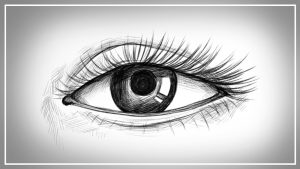
A Guide to Eye Drawing
Eyes are captivating! They convey emotions, tell stories, and hold the power to draw viewers into a drawing. Mastering eye drawing can elevate your artwork to a whole new level. So, grab your pencils and let’s dive in!
1. Understanding the Eye’s Anatomy:
Before drawing, familiarize yourself with the basic structure of an eye. Here are the key elements:
- Eyeball: Roughly spherical, sits within the eye socket.
- Iris: The colored part, containing the pupil and surrounding tissue.
- Pupil: The black circle in the center, responsible for regulating light intake.
- Sclera: The white part surrounding the iris.
- Eyelid: Folds of skin protecting the eye, with eyelashes growing along the edges.
- Cornea: Transparent outer layer covering the iris and pupil.
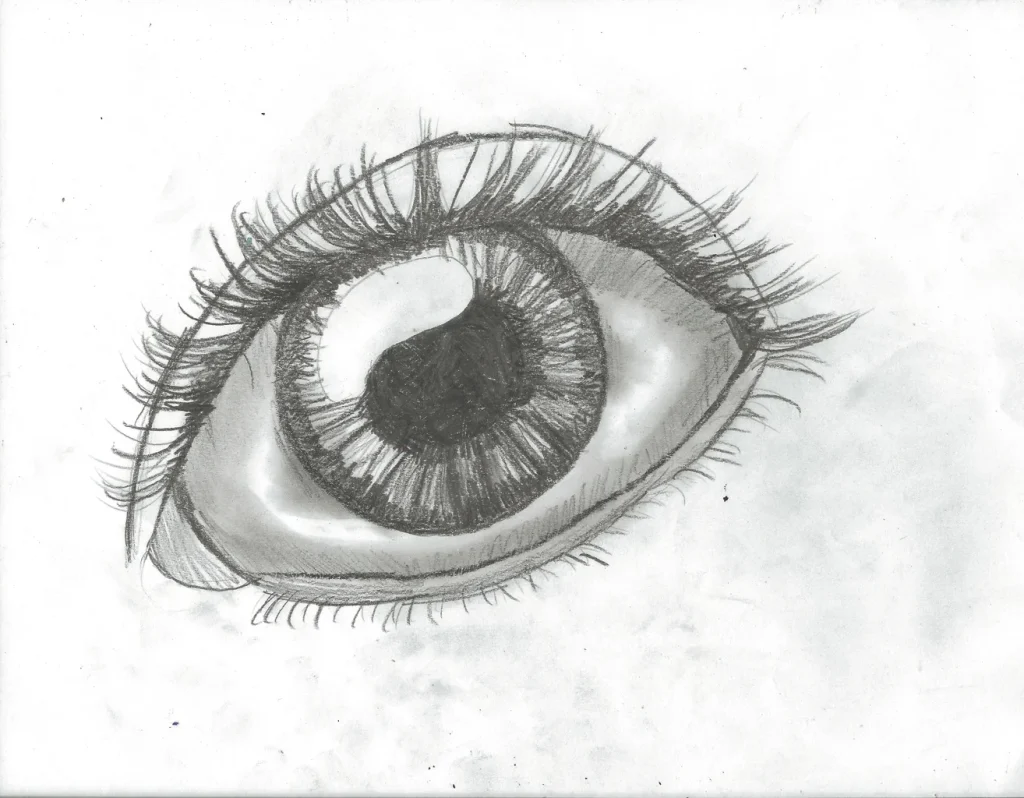

Mastering the Basics of Eye Drawing
Ready to take your eye drawing skills to the next level? Let’s delve deeper into mastering the basics and unlock the secrets of captivating orbs!
1. Anatomy Refresher:
Brush up on your eye anatomy knowledge. Remember the key players:
- Eyeball: The roughly spherical structure nestled in the eye socket.
- Iris: The colored part, featuring the pupil and surrounding tissue.
- Pupil: The black circle regulating light intake.
- Sclera: The white part surrounding the iris.
- Eyelid: Protective folds of skin with eyelashes along the edges.
- Cornea: Transparent outer layer covering the iris and pupil.
2. Beyond the Basic Shapes:
Move past simple circles and ovals. Here’s how to refine your eye sketches:
- Eyeball shape: Elongate the circle slightly, creating an oval with the wider end pointing towards the temple. Remember, it’s not perfectly symmetrical.
- Iris and pupil placement: Don’t center the iris within the eyeball. Shift it slightly upwards and inwards for a more natural look. Position the pupil off-center within the iris for added realism.

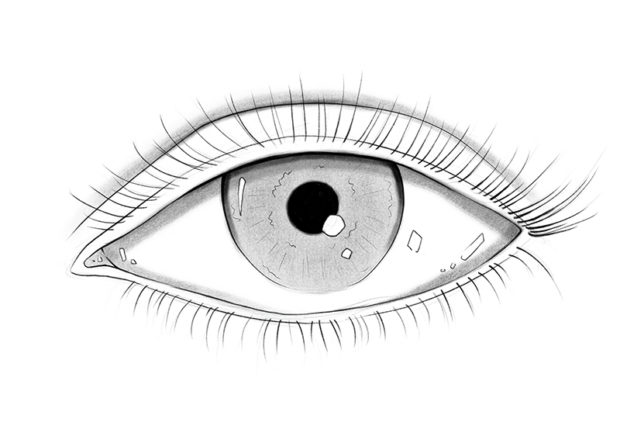
Eye Drawing for Beginners
Eyes are like windows to the soul, and drawing them can feel intimidating. But fear not, aspiring artists! This guide will break down eye drawing into fun, bite-sized steps, perfect for getting you started.
Materials:
- Pencil (HB or 2B)
- Eraser
- Drawing paper
Step 1: Let’s Get Shapey!
- Circle time: Draw a light circle for the eyeball. Don’t worry about perfection, just a smooth, roundish shape.
- Iris in, pupil smaller: Inside the circle, draw a slightly smaller circle for the iris. Remember, it’s not always perfectly centered! Nestled within the iris, add an even smaller circle for the pupil.
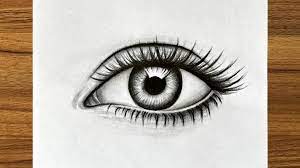
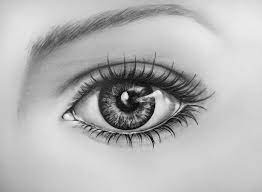
A Step-by-Step Eye Drawing
Ready to draw an eye that mesmerizes? Let’s break it down into a simple, step-by-step process, so you can watch your skills twinkle!
Materials:
- Pencil (HB for sketching, 2B for shading)
- Eraser
- Drawing paper
Step 1: Laying the Foundation (5 minutes):
- Light, airy circle: Sketch a light circle with your HB pencil to represent the eyeball. It doesn’t have to be perfect – a gentle, rounded shape is good.
- Iris in the spotlight: Inside the circle, draw a slightly smaller circle for the iris, positioned slightly off-center for realism.
- Pupil takes center stage: Nestled within the iris, sketch an even smaller circle for the pupil, again slightly off-center.
- Eyelid framing: Above and below the iris, draw two curved lines for the upper and lower eyelids. These should be subtle curves, not sharp arcs.
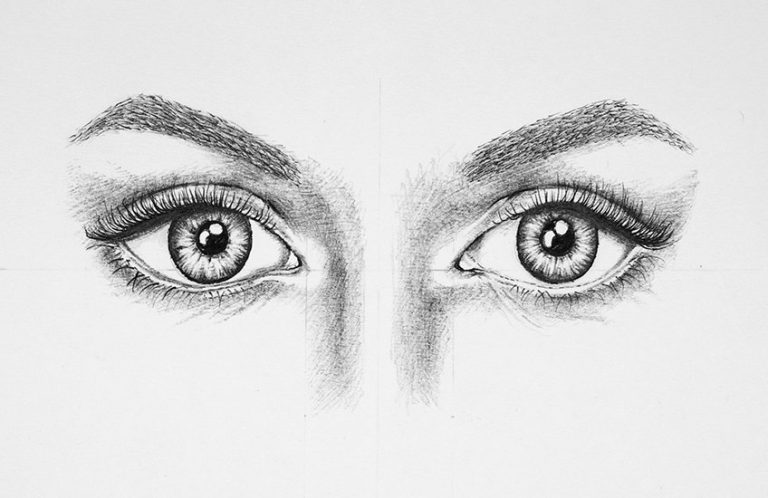
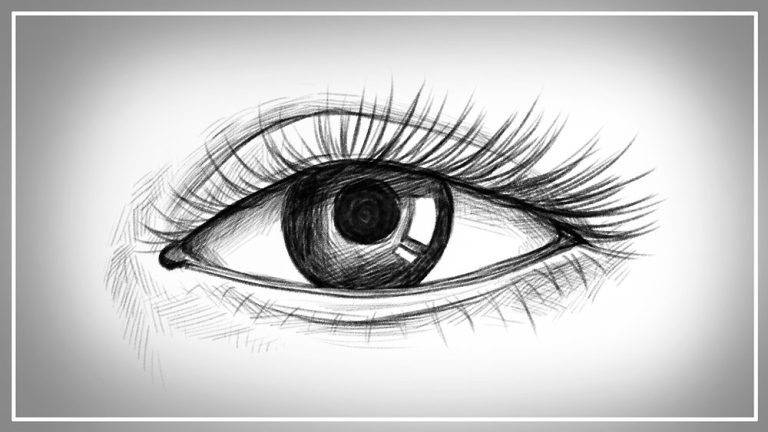
Eye Drawing Techniques
Ready to elevate your eye drawing beyond the basics? Let’s dive into some techniques that’ll add depth, expression, and realism to your captivating orbs!
1. Mastering Shading:
- Layering: Build up layers of light and dark pencil strokes for nuanced shading. Start light and gradually add darker layers for depth and control.
- Blending: Use a blending stump or cotton swab to smooth out pencil strokes and create soft transitions, especially in the iris and around the eyelids.
- Highlights and catchlights: Add small white dots or streaks for highlights on the iris and pupil to add sparkle and life to the eye.
- Reflected light: Consider the light source and its reflection on the eyeball for subtle highlights on the lower eyelid and tear duct.
2. Capturing Texture:
- Iris variations: Use different pencil strokes and textures to depict the natural patterns and variations in the iris’s color.
- Skin texture: Add subtle lines or dots around the eyelids to suggest the texture of skin, especially under the lower eyelid.

Frequently Asked Questions (FAQs)
Expressive eyes convey emotion. To achieve this:
- Focus on the eyebrows and their positioning, as they play a significant role in expressing emotion.
- Experiment with the size and shape of the pupils, as larger pupils can convey surprise or excitement, while smaller pupils may indicate tension or focus.
Adding depth involves incorporating shading and highlights. Shade the iris to create a sense of volume and use highlights to simulate reflections. Pay attention to the way light interacts with the eye’s surface, emphasizing the curvature and creating shadows where needed.
Choosing the right colors depends on the eye’s natural color and the lighting conditions. Use a combination of shades and tones to capture the subtle variations in color. Observe the subject closely to identify any unique characteristics, such as flecks or patterns, and incorporate those into your color palette.
Related posts:
- 10 things to do if you can work during coronavirus
- 6 New Age Career Options
- 8 ways to make a career in tourism
- 8 tips to boost dynamics in 9th studies
- 7 tips to crack Delhi University Entrance Test after 12th
- शीर्ष १० आई आई एम् से सम्बंधित महत्वपूर्ण बातें –
- Brace yourself for the SET exam after 12th
- Need and colleges for B.Sc. in Agricultural Science!




















